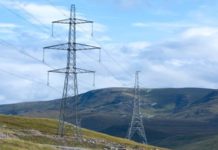 National Grid has forecast ample headroom on the power system this winter of 11.7%. But it has warned businesses to prepare for price volatility due to weather effects on renewables generation and changes to cashout prices in the Balancing Mechanism.
National Grid has forecast ample headroom on the power system this winter of 11.7%. But it has warned businesses to prepare for price volatility due to weather effects on renewables generation and changes to cashout prices in the Balancing Mechanism.
The latter aspect is because rule changes agreed some years ago come into effect from 1 November. They mean that participants in the Balancing Mechanism that put more or less power into the system than they contracted to have to pay higher penalties, or cashout prices, for creating system imbalances (see how it works here).
From November, the cashout price will be based on the most expensive megawatt hour bought to balance the system (called PAR1, in industry jargon) instead of the most expensive 50MWh. The maximum penalty rises from £3,000 to £6,000 per megawatt hour. These penalties apply for every half hour period of every day.
That creates greater price risk for generators and suppliers – which will be absorbed into standard fixed energy contracts, or passed through to businesses on flexible contracts.
While volatility presents risk, it also presents opportunity for businesses that can quickly react by adjusting load or generation output (demand-side response, or DSR).
“Sharpening of cashout arrangements in combination with weather effects could result in some interesting prices to load manage against this winter,” according to Ørsted managing director, sales, Jeff Whittingham. Should big price spikes occur, he thinks it will attract more businesses into DSR (more from Whittingham on this here)
National Grid said businesses should be prepared for a ‘modest’ rise in balancing costs as a result of steeper imbalance penalties, but suggested these would decline in the medium to long term as ‘efficiency savings’ from the new rules kick in.
Gas and coal
Meanwhile, National Grid expects there to be ‘sufficient’ gas to meet winter peak demand. It anticipates demand will be lower than last year, when the UK came close to running out of gas.
National Grid’s confidence is based partially on rising gas prices, that will likely mean coal becomes more economic for power generation. If more coal is burnt, less gas will be used to generate power, leaving more to go around, it suggested.
See the Winter Outlook here.
Related stories:
Aligning risk and reward: Free 2018 DSR report
Drums beat louder for gas security inquiry
National Grid issues gas shortage warning, asks market to pull out stops
Energy risks and rewards: What will hit businesses in 2018
Centrica to close Rough, UK’s largest gas storage facility
National Grid outlines plan to bring all flex providers into Balancing Mechanism
Ørsted predicts higher DSR revenues as cashout arrangements change
Click here to see if you qualify for a free subscription to the print magazine, or to renew.
Follow us at @EnergystMedia. For regular bulletins, sign up for the free newsletter.




Interesting analysis by Elexon into the effect of PAR1 vs PAR50
https://www.elexon.co.uk/elexon-insights-november-2018-changes-system-price-calculation-sept-2018/
“Recalculating System Prices with November 2018 changes show that prices when the system is short would have increased by an average of £2.69/MWh.
The average decrease when the market is long would have been £0.62/MWh.”